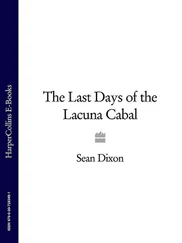The grand duchess was even keener to hear of progress at the new palace at nearby Pavlovsk, the estate presented to the heir on the birth of his first son. There was still snow on the ground when Catherine made an impromptu visit on 29 April, much to the alarm of the steward, who had only recently taken delivery of 3.5 million bricks. Catching up with the empress while she was still inside the house, he accompanied her on a characteristically demanding tour of the park:
From the ruin Her Majesty wanted to go down to the right of the temple where the paths are not yet made… I prayed M. Nelidinsky to go by a better path but Her Majesty wished to continue… Before arriving [at the cascade] she asked several questions about the water, which I had to answer as no one could explain it sufficiently to Her Majesty. She stopped a moment at the cascade, and passed to the chalet, asking me questions from time to time. She sat a moment at the chalet and asked me several questions about the colonnade then took the path to the edge of the garden. 103
‘Building is a devilish thing,’ Catherine confessed to Grimm in one of her periodic excursions into her native German. ‘It devours money, and the more one builds, the more one wants to go on. It is a sickness, like drinking, and a sort of habit.’ 104So powerful was that habit that it was not only her favourite summer palace that she had ‘turned upside down, so to speak’:
You wouldn’t recognise my bedroom here in town…I used to have a niche: I have it no longer. My bed is facing the windows and, so that I don’t have the light in my eyes, there is a mirror facing the windows at the foot of the bed, under which is a canopy that barely covers the bed. On both sides of the bed, I have some banquettes which go around the alcove. It’s charming, and this invention by your humble servant is currently being adopted in all the houses in Petersburg. Besides, my bed is not at all in the imperial style: it has only curtains. 105
Much more in the imperial style was the empress’s growing art collection. When Potëmkin first took Corberon to the Hermitage in January 1776, he found ‘a lot of pictures, badly displayed’:
The gallery is too narrow; there is not enough space to see them and the windows don’t reach high enough, or rather, they descend too low. These are ordinary casements, unlike those in the gallery at Kassel. Here I noticed, with sorrow, Greuze’s Paralytic : it has lost its colour and its effect; it is diminished now. 106
The answer was to build a bigger gallery—the Large Hermitage—and to keep on making acquisitions to fill it. Catherine’s most significant purchase in these years was from the bankrupt descendants of Sir Robert Walpole at Houghton Hall, where a formal portrait of the empress, offered in part exchange, still dominates the saloon. The Walpole collection, which included Rembrandt’s Abraham and Isaac , was so important that John Wilkes had proposed to Parliament that it be purchased from public funds as the basis for a new National Gallery. George Walpole, the third earl, had other ideas. As Horace Walpole reported in December 1778, ‘the mad master’ had ‘sent his final demand of forty-five thousand pounds to the Empress of Russia’. In the end, she paid £40,555 in a sale negotiated by her ambassador in London. ‘Russia is sacking our palaces and museums,’ moaned Josiah Wedgwood. 107
Despite her support for the Imperial Academy of Arts at St Petersburg, Russian painters scarcely figured in her collection. For the lucky neoclassical artists who impressed her foreign agents—Grimm in Paris and Johann Friedrich Reiffenstein in Rome—Catherine’s patronage offered a potential bonanza. Anton Raphael Mengs was already approaching the end of a life of service to the Courts of Dresden and Madrid when she first expressed interest in his work in 1776. By the time Perseus and Andromeda (1777) arrived in the Hermitage, shortly after the departure of Joseph II, he had been dead for a year. ‘The fever takes hold of me, too, when I think of the state Mengs is in,’ Catherine told Grimm during the artist’s final illness. ‘I hope all the great men of our century are not destined to die before the year 1780.’ 108Clérisseau, whose drawings of Rome arrived in the same consignment as the Mengs, was still very much alive, having recovered from his earlier embarrassment to trade so openly on the empress’s fondness for his work that a scandal erupted when Paul inadvertently snubbed him in Paris. 109It was there that Alexander Stroganov showed off the bust of Catherine commissioned from Jean-Antoine Houdon. She herself had ordered a bust of Voltaire, whose death in 1778 at the beginning of her infatuation for Rimsky-Korsakov had made her feel ‘a very great contempt for all the things of this world’. 110All Europe echoed Jeremy Bentham’s mock awe at her well-publicised aspiration to build a replica of Ferney: ‘Kitty you will find is going to erect a monument to him, in the middle of Petersburgh and to have a model of his house in her park at Czarskozelo.’ 111In the end, she settled for buying his library for the Hermitage. It arrived in 1779, seven years before Diderot’s books finally made their way to St Petersburg, to be placed in the care of A. I. Luzhkov, still not thirty, who had translated the Encyclopédie article on ‘political economy’ for Catherine’s Society of Translators. 112Yet by no means all her purchases pleased her. Returning to town with the newly inoculated grand dukes in September 1781, shortly after their parents’ departure for Vienna, Catherine complained to Grimm about the latest delivery from Rome. It was if the rain had somehow obscured her vision:
To my great astonishment, except for the Mengs and a few other trifles, all the rest, except for the Raphael loggias, are nasty daubs: I have told Martinelli, the painter who takes care of my gallery, to choose [the best] and send the daubs to auction for the benefit of the civic hospital. Heavens above! It is incredible how the divine one [Reiffenstein] has allowed himself to go wrong this time: I beg you to ask him expressly to buy no more from Monsieur Jenkins. It is scandalous to pass off such banalities under the name of this or the other painter. My guests at the Hermitage were ashamed to go in there ahead of me. 113
Some reasonably assumed that there must be no end to Catherine’s resources. When a French craftsman set his price in 1776 for a writing desk to commemorate the victory at Chesme, Grimm thought the sum ‘so ridiculous’ that he expected the deal to be cancelled. Yet, as he later explained to the French foreign minister, ‘it turned out otherwise. The empress, who likes to encourage artists in extraordinary projects—and who perhaps intended this escritoire as a mark of her munificence—ordered me to have it done.’ 114In reality, even Catherine’s budget was overstretched. In 1778, she had her ambassador in Paris commission a 744-piece Sèvres service. (It was a gift for ‘my dear, beloved Prince Potëmkin, but so that it should be all the finer, I have said that it is for me’.) Each plate was priced at 242 livres, the sugar bowls at 1410 livres, and the liqueur decanter at 2236 livres, making a grand total of 328,188 livres (roughly 41,000 roubles at the rate of exchange given by Bentham in June 1778). But when it emerged in the following year that the full amount had not been paid, part of the service was held back in compensation and it was not until 1857 that officials acting on behalf of her youngest grandson, Nicholas I, acquired the missing pieces. 115The tension between ambition and economy remained unresolved in many of Catherine’s commissions. No one was to learn this sooner than Giacomo Quarenghi, one of two Italians recommended by Grimm in 1779 when the empress complained that Rinaldi and her other architects were ‘too old, or too blind, or too slow, or too lazy, or too young, or too slothful, or too much the grand seigneur, or too rich, or too respectable, or too stale’. 116Having been ordered to design new bronze doors for her bedroom at Tsarskoye Selo in 1784, Quarenghi warned Betskoy that ‘although Her Majesty desires that these doors should be as sumptuous as possible, if Your Excellency finds the price rising too high, bronze could be used only for the locks and the doorframes’. 117Most of his subsequent designs were supplied with alternative specifications, allowing for variations in cost.
Читать дальше












